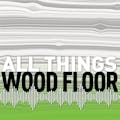It’s hard to report the precise amount of atmospheric carbon forests absorb because scientists don’t yet have a great way to measure forest density. That problem may be solved, soon, from space.
A laser-based instrument is being developed for the International Space Station that, once installed in 2018, will beam three infrared lasers at the Earth 16 billion times per year. The light will hit forest floors and canopies, and scientists will calculate density based on the time it takes the light to reflect and travel back to the space station, according to Smithsonian.
Scientists will use the device, named the Global Ecosystem Dynamics Investigation (GEDI), to create 3D maps to estimate forest biomass and, ultimately, the amount of atmospheric carbon dioxide that is consumed via photosynthesis.
There are limitations, however. The $94 million device may be the most precise satellite sensor to date, but it can only detect density where the space station can point it. That means it will collect data on forests between the latitudes of 50 degrees north and south, or from the U.S.-Canada border to the bottom of Argentina.
Missing from that portion of the globe are the boreal forests of Canada and Russia. It does include the forests of the Amazon and Africa. Project director Ralph Dubayah, of the University of Maryland, told the Smithsonian that ecologists “have waited almost 20 years to have measurements like this.”
























